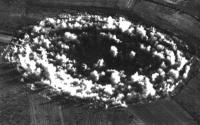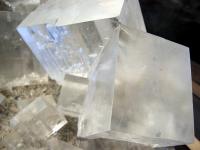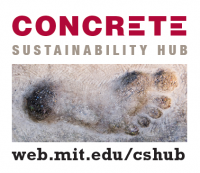-
ISIS may get its hands on “highly dangerous” nuclear material stolen in Iraq
Iraqi security agencies are searching for “highly dangerous” radioactive material stolen last year. Experts are worried that the material could fall into the hands of ISIS. The material – Ir-192 — is designated a Category 2 radioactive by the IAEA, and it could be used to build a “dirty bomb,” which combines nuclear material with conventional explosives to contaminate an area with radiation.
-
-
Ending civilian use of highly enriched, weapon-grade uranium
Efforts to convert civilian research reactors from weapon-grade highly enriched uranium (HEU) to low enriched uranium (LEU) fuels are taking significantly longer than anticipated, says a report from the National Academies of Sciences. The report calls for the federal government to take immediate steps to convert civilian research reactors currently using weapon-grade HEU fuel to a lower-enriched HEU fuel while awaiting the qualification of new LEU fuel.
-
-
Specialized ORNL team uses nuclear forensics to solve mysteries, safeguard materials

From the Manhattan Project in the 1940s to the High Flux Isotope Reactor’s 50th anniversary and its selection as an American Nuclear Society Nuclear Historic Landmark, the Department of Energy’s Oak Ridge National Laboratory (ORNL) has been the preeminent destination for nuclear R&D. A group of nuclear detectives at ORNL) takes on tough challenges, from detecting illicit uranium using isotopic “fingerprints” to investigating presidential assassination conspiracies.
-
-
Symetrica inaugurates Radioactive Threat Verification Solutions Hub
Southampton, U.K.-based Symetrica has inaugurated the company’s new Radioactive Threat Verification (RTV) Solutions Hub. The company says that the new facility will improve the company’s ability to support the global security community – including the U.K.’s Home Office and Border Force, the U.S. Department of Homeland Security, and other border protection agencies.
-
-
New X-ray method could detect nuclear materials

Inspectors need tools to help find nuclear materials hidden behind thick shielding or smuggled inside any of the 100 million-plus cargo containers shipped around the world each year. Uranium is perhaps the easiest nuclear material to obtain and hide. Physicists have demonstrated that their unconventional laser-based X-ray machine could provide a new defense against nuclear terrorism. The scientists used the laser-driven X-ray source to produce an image of a uranium disk no bigger than a stack of three nickels and hidden between 3-inch steel panels.
-
-
Pairing seismic data, radionuclide fluid-flow models to detect underground nuclear tests

Underground nuclear weapon testing produces radionuclide gases that may seep to the surface, which is affected by many factors. These include fractures in the rock caused by the explosion’s shock waves that create pathways for the gas to escape plus the effect of changes in atmospheric pressure that affect the gases’ movement. Scientists have developed a new, more thorough method for detecting underground nuclear explosions (UNEs) by coupling two fundamental elements — seismic models with gas-flow models — to create a more complete picture of how an explosion’s evidence (radionuclide gases) seep to the surface.
-
-
Rock salt serving to store nuclear waste may not be as impermeable as previously thought

The Waste Isolation Pilot Plant (WIPP) in Carlsbad, New Mexico, stores low-level nuclear waste in salt beds beneath the ground. For decades there has been a proposal to build a permanent central repository under Nevada’s Yucca Mountains. This has renewed interest in rock salt as an alternative permanent storage solution for high-level nuclear waste. Researchers found that rock salt, used not only by the United States, but also by Germany, as a subsurface container for radioactive waste, might not be as impermeable as thought, or as capable of isolating nuclear waste from groundwater in the event that a capsule or storage vessel failed.
-
-
At the nanoscale, concrete proves effective for nuclear containment

One of the main challenges faced by the nuclear industry is the long-term confinement of nuclear waste. Concrete is one of the barrier materials commonly used to contain radionuclides, both in nuclear reactors and nuclear waste-storing facilities. New research shows concrete is a strong choice for the long-term confinement of nuclear waste.
-
-
Demonstrating technologies for disaster response
Radiological incidents such as Chernobyl and Fukushima illustrate the need for effective coordination of federal, state, and local agencies in response efforts. Earlier this year, the Department of Homeland Security (DHS) Science and Technology Directorate’s (S&T) National Urban Security Technology Laboratory (NUSTL) and the Environmental Protection Agency (EPA) demonstrated new technology developments at the Columbus, Ohio, Battelle Memorial Institute facility that will enable more effective radiological decontamination.
-
-
Finnish company to construct final disposal facility of spent nuclear fuel

The Finnish government has granted a license to Finnish company Posiva for the construction of a final disposal facility for spent nuclear fuel. The spent fuel assemblies will be encapsulated and placed in the bedrock at a depth of about 400 meters for permanent disposal. The waste will be stored for around 100,000 years before its level of radioactivity begins to dissipate. “This is the world’s first authorization for the final repository of used nuclear waste,” Finland’s Economy Minister Olli Rehn said.
-
-
New, portable radiological detectors for frontline personnel

Recently, DHS’s Domestic Nuclear Detection Office (DNDO) awarded a multimillion dollar contract which will equip U.S. Coast Guard (USCG), U.S. Customs and Border Protection (CBP), and Transportation Security Administration (TSA) frontline personnel with a new capability to detect and interdict radiological or nuclear threats. The award is for small, wearable radiation detector devices – called Human Portable Tripwire (HPT) — which passively monitor the environment and alert the user when nuclear or other radioactive material is present.
-
-
Inspired by cats’ eyes, new camera can look inside nuclear reactors

Currently 11 percent of electricity worldwide is generated by nuclear reactors. There are 435 reactors in operation with another 71 under construction. Engineers, drawing inspiration from the eyes of cats, have created a new camera that can see radiation coming from nuclear reactors — boosting safety, efficiency, and helping during nuclear disaster emergencies.
-
-
Search in Illinois, Indiana for missing canister holding radioactive materials
Teams from the Illinois Emergency Management Agency (IEMA) are continuing their search in Illinois and neighboring Indiana for a missing steel canister containing radioactive material. The locked steel canister was last believed to be in a custom oil well logging truck. The nuclear material was used by an Illinois company specializing in surveying oil wells.
-
-
Residents of a St. Louis suburb worry about landfill containing nuclear waste
Residents of a St. Louis suburb are increasingly anxious over a potential nuclear threat buried in the ground. One landfill nearby contains nuclear waste, while in a second landfill, only 1,000 feet away, there is “hot spot” burning underground. There are other problems, though. Over the past weekend, a grass fire reached to within seventy-five yards of the radioactive waste, and the region sits near an earthquake fault line.
-
-
$100 million NIAID contract to SRI International to develop radiation exposure treatment

SRI International has been awarded a resource contract of up to $100 million over five years by the National Institute of Allergy and Infectious Diseases (NIAID), part of the National Institutes of Health, for the development of products to mitigate or treat acute or delayed effects of radiation exposure.
-
- All
- Regional
- Water
- Biometrics
- Borders/Immig
- Business
- Cybersecurity
- Detection
- Disasters
- Government
- Infrastructure
- International
- Public health
- Public Safety
- Communication interoperabillity
- Emergency services
- Emergency medical services
- Fire
- First response
- IEDs
- Law Enforcement
- Law Enforcement Technology
- Military technology
- Nonlethal weapons
- Nuclear weapons
- Personal protection equipment
- Police
- Notification /alert systems
- Situational awareness
- Weapons systems
- Sci-Tech
- Sector Reports
- Surveillance
- Transportation
Advertising & Marketing: advertise@newswirepubs.com
Editorial: editor@newswirepubs.com
General: info@newswirepubs.com
2010-2011 © News Wire Publications, LLC News Wire Publications, LLC
220 Old Country Road | Suite 200 | Mineola | New York | 11501
Permissions and Policies
Editorial: editor@newswirepubs.com
General: info@newswirepubs.com
2010-2011 © News Wire Publications, LLC News Wire Publications, LLC
220 Old Country Road | Suite 200 | Mineola | New York | 11501
Permissions and Policies
